Reducing the Energy Consumption in Cloud bursting During Horizontal Deployment
Info: 7657 words (31 pages) Dissertation
Published: 3rd Feb 2022
Abstract
In recent scenario cloud computing is one for major part for making any kind of infrastructure which is basically based on supercomputer. All type of computers basically distributed and scientific computer are becoming one of the major concerns for cloud based solution. With cloud based computing concept or cloud based solution another parts comes that is cloud bursting. The concept of cloud bursting basically provides a shift from private cloud to public to manage and maintain the huge amount of load. The need of this kind of cloud burst is to provide more space to the user so that they can store their data in proper manner. In order to make proper shifting the public cloud concept are generated. Basically cloud based computing are done in two ways and that are horizontal deployment and vertical deployment.
Main issue in case of cloud bursting is the there is huge chance of energy consumption and this kind of energy consumption are generally conducted in case horizontal deployment. In order to make a solution load balancing algorithm are used to reduce the energy consumption. Load balancing is one of the most important parts in case of cloud based environment and with the help of proper load balancing it is possible to perform properly and the performance of the cloud computing get improved. The horizontal deployment is that kind of process by where all the jobs are moved in to the public cloud and they are allocated in a particular queue and according to the availability of the virtual machine they are actually performed. In case of resource allocation on particular virtual machine load balancing algorithm plays a major role.
Table of contents
Introduction
Literature Review
Methodology
Design specification to reduce energy consumption in case of horizontal deployment
Implementation or development
Evaluation
Conclusion and discussion
Appendices
Introduction
The topic is discussed about the thorough research work for the implementation of consuming the energy for cloud bursting. Cloud bursting creates the sensation of IT development by reducing the energy consumption of the machine Cloud is used for consuming energy in horizontal deployment. It is mainly used for creating a virtual machine by using the technique of cloud bursting. The main purpose of the cloud bursting is to create virtual machine using the ideal techniques which would help to establish the task in the running state. Virtual machine become in ready state but virtual machine is unable to find the tasks loaded to the machine.
It causes the horizontal deployment for the priority of the virtual machines without considering the priority of the whole batches which are already provided by the machine when it is in ready state. Cloud bursting is a particular type of application deployment concept which is providing a private cloud bursts into a public cloud for improving the capacity of the storage.
The main purpose of cloud bursting is to create extra storage place for consuming energy within the hybrid cloud (Djemame et al. 2017). The hybrid cloud deployment is an advantageous procedure which consumes huge amount of energy for an organization for providing extra computing resources. Experts recommend that the cloud bursting can make a higher performance by improving the capacity of the information (Toosi, Calheiros and Buyya, 2014). Load balancing algorithm is rapidly used for reducing the energy consumption process by cloud 1bursting but the horizontal deployment procedure is not so popular for the job. This is a gap which should have to fill for the further improvement of the cloud bursting. Other special technique can be used as an effective way which can move the information of the private cloud into the public cloud by bursting the cloud. Cloud bursting reduces the information consumed into the software by using different types of algorithms.
It is very important to reducing the consumption of the information for making work load free machine. For the purpose of this, creating of the virtual machine is essential too. Cloud bursting is mainly used for reducing the load of the machine by creating virtual machine which would help to enhance the capacity of the machine (Ouardi, Sekkaki and Mammass, 2017). Cloud bursting increases the potentiality of different environment and provides the limited availability of the developed tools. That’s why the service providers of cloud computing and the vendors of virtualization have improved the tools for transferring the loads of the works into the private cloud and creating a hybrid cloud for improving the capacity of the workloads.
Literature Review
This phase is discussed about some techniques which are essential for the improvement of the process of reducing the consumption of energy by the process of cloud bursting.
The virtual machine implements a priority based tasks which provide a high performance and capacity for making a progressive development of the software technology. The main specification behind the topic is ideal demonstration of the virtual clusters, idle load balancing mechanism as well as the idle machine detector. The enhancement of the technology provides the automatic implementation of the cloud bursting where multiple tasks are continuing without keeping an idle virtual machine. Virtual machine is used for implementing the tasks and the timeslots are adjusted with the virtual machine for making the machine authentic.
Three types of techniques can be used for reducing the energy consumption by using the cloud bursting procedure.
Resource Allocation technique
It is used when multiple jobs arrive at the same time and they needs to schedule, they require different resources for being allocated properly and the resources are arranged according to the size of these. The equal priority of the job is arranged in a queue and they are sent to the resources where they are going to be allocated. Multiple queue scheduling process is used for dividing the jobs into different number of sections. The resources are scheduled depending on the demand as well as the size of the resource which the virtual machine can handle. The tasks having higher priority can be separated into a queue and the lower priority tasks are separated into other queue for making the job easy to the virtual machine. Researchers analyzed the topic and find this technique as an easy technique for reduction the energy consumption by using cloud bursting (Sun et al. 2017) If the places of the tasks are allocated previously it would be easier to the machine to do its work properly moreover, it would help to reduce the excessive traffic of the tasks. Sometimes it can be seen that the multitasking within a machine makes it slow and interruptive. The experts say that, one of the easiest ways for removing the problem is resource allocation procedure.
Replication based resource allocation
The replication based resource allocation divides the whole cloud into two sub clouds and the jobs are equally distributed into two clouds. The virtual machine starts processing the jobs for allocating them. After completing the job, the virtual machine informs to the other virtual machine of the sub cloud. In replication process only the sub clouds are busy for having the jobs while rest of the jobs is ideal.
Load balancing
The other process of resource allocation is load balancing which is used for improving the distribution of the workloads within the multiple resources such as computer cluster, CPU or disk drive. The objective of the process is optimizing use of resources and increasing the throughput involving the DNS server process. This is a useful technique of the resource allocation which is comfortable to the users for getting workload free machine.
Simulating algorithm
It is a part of resource allocation which creates the approximation of global optimum of particular function. Simulating algorithm produces the behavior of the virtual machine using mathematical tools and concept. It is used for allocating the resources to reduce the load of the cloud services.
Scheduling algorithm
It is used for implementing the reduction of energy on the cloud of a machine. A strategy of task exchanging is used by the heuristic based scheduler for the enhancement of reducing the process of cloud bursting. The scheduling algorithm specifies works for assigning the resources to complete the consumption of energy. The objective of the algorithm is reducing the time for executing the task of the scheduling as well as maximizing the resource utilization on the platform of cloud environment. This algorithm creates a heterogeneous environment in the clusters and each cluster uses different types of servers for creating the exact formulation of the topic. This strategy ensures the optimal cloud cost resources which is used into the virtual machine. According to the crucial explanation of the analyzed method
Virtual machine is managed by the use of appropriate sorting off data as well as the sorting of data into the specific location of virtual machine ID. Therefore, the methods of secluding algorithm can be used to the purpose of reducing the energy consumption via cloud bursting by the help of the end users.
Synchronized load balancing algorithm
It is the most important technique for balancing the load of the virtual machines in the data clusters. In this synchronized load balancing system the application of the resources is maximized with the help of virtual machine (Cui, 2013.). Hash map is used for storing the virtual machine ID for creating the work more authentic. The load balancer checks the whole virtual machine and ensures the highest priority to the empty virtual machine for being implemented then. It is the most useful way for creating and implementing the works of the virtual machine with giving the proper priority. As stated by Moreno-Vozmediano et al. 2015, it can be said that it is a very useful technique for reducing the energy consumption by using the process of cloud bursting.
Methodology
This research is discussed about the horizontal deployment for the work on virtual machine. The load balancing algorithm is used for the horizontal deployment through three steps.
Recovering Data from the Virtual machine
In this phase load balancer authorized the services of the cloud so that users can get the authentication for using the services. In this phase, the user should have to send a request to the cloud service authority for gaining the authentication. After that, the load balancer should have to request to the virtual machine for retrieving the data. After getting the authentication token, the load balancer sends information for getting the request .After that the received information from the virtual machine is stored by the load balancer for the future demand.
Creating a Virtual Machine in a proper way
The other phases of Load balancing are to create the virtual machine. At first the web application is creates its request for starting the virtual machine. Thereafter, the hypervisors accept the request after communicating with cloud sites then load balancers replies accordingly. After measuring the CPU load, the load balancer decides about the exact place of creating the virtual machine then the virtual machine is created. The web application interface is used for displaying the contents of the virtual machine.
Migrating behavior of Virtual machine
Load balancer requests controller when the capacity of the cloud site is full. The snapshot of the virtual machine is created with the help of the glance services which would help to store the glance images. Controller responses about the glance image notification. After completing the whole procedure, it is needed to upload the image as well as the snapshot to the database of the images. The migratory behavior of the Virtual machine would help to improve the whole method of load balancing (Altamimi et al. 2015).
The load balancing procedure is the most popular methodology for the implementation of reducing the energy consumption by using the process of cloud bursting because it is the secure way for storing the data as well as improve the capacity of the data storage by providing the virtual machine. There are profits for using the load balancing technique for reducing energy consumption because the technique enhances the capacity of the virtual machine for making the cloud as a public cloud .It would help to decrease the loss of data and ensures the capacity of the machine. Though, it has a weakness about the security of the sensitive data when the information goes from the private cloud into the public cloud. However, it is profitable for using the technique for horizontal deployment using the cloud bursting.
It is easy to understand by the users and controllers because of the migrating behavior of the virtual machine which is mainly used in Load balancing algorithm. The Load balancing methodology is accepted and hugely used technique for reduction the energy via the cloud bursting. Virtual machine helps in cloud bursting process for the migrating behavior of the virtual machine. The cloud bursting involves the horizontal deployment of the virtual machine. Thus, the load balancing technique is chosen as an appropriate technique for the purpose of it.
Thus, the load balancing technique is accepted as an appropriate research technique and methodology by recovering the data by creating the virtual machine and migrating the information from the private cloud into public cloud. These are the effective ways for implementing the process of horizontal deployment.
Design specification to reduce energy consumption in case of horizontal deployment
Any kind of storage design or normal design for the virtual based solution is one of the most critical jobs for anybody and it requires mostly proper infrastructure, cost, agility and performance. Apart from that in cases of designing a proper cloud based computing or cloud disbursing the design and mechanism need a proper planning or so that energy consumption can reduce. This particular topic is about horizontal deployment process in case of cloud bursting process (Moreno-Vozmediano et al. 2012). Generally is uses huge amount of space when the private cloud moves to the public cloud in cases of horizontal deployment.
Virtual clustering method
With the help of this kind of virtual clustering method various kind of batch system are used to support the batch which HTcondor (It is a distributed parallelization of very intensive tasks that are to be processed). Generally the entire virtual cluster supports various kind resource pools for the every type of batch system. In case of virtual clustering it requires more effective and convenient strategies which help to VMs running on a particular mass which is a physical computing node (Galante et al. 2012). With the help of this kind structure or virtual cluster deployment it actually manage and monitor huge and large scale cluster mad at the same time load balancing, scheduling also plays major role in case of cloud disgusting.
Specifically in case of batch system with the help of plug in interface the communication is conducted between the virtual cluster and batch job system is completed.
Another part is cloud plug is the interface designing and it works like batch system and makes relation between clouds and virtual cluster. In order to reduce energy consumption the virtual cluster method or system generally provide fast deployment and this clustering system have the ability. Deployment basically suggests or provides easy and very fast distribution of software stacks and if it done in proper manner and quickly then some energy consumption can be reduced.
Apart from that cluster is one of the high energy efficient method or technique and with the help of this kind technique homogeneous workstation and particular application cam managed.
With the help of REST API virtual cluster communicates with the external cloud provider and deployment of virtual cluster is used to avoid huge amount of energy consumption.
Load balancing Algorithm
In case of Load balancing algorithm basically the virtual machine is dispatched on the respective physical machine and this kind of virtual machine has actually huge amount of utilization but after that the requested virtual machine has sufficient amount of resources. This kind of algorithm structure is used to reduce the physical memory for the particular cloud buster and in that way sane the energy consumption.
The most important part in case of load balancing is to start the and the virtual machine in case of running state of batch system. Calculation ability of the load balancing actually helps to launch the virtual machine with using or investing less amount of electric consumption. Another important part in case of batch type system is to predict the job completion time and with the help of this kind of prediction process extra electric consumption can be avoided. If the specific data are selected in case of cloud bursting then it will help to denote the allocation strategies.
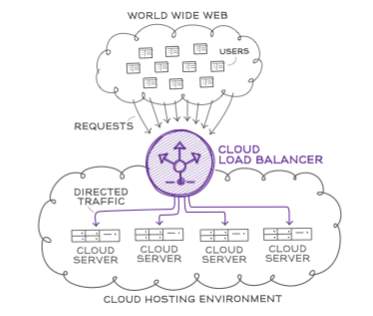
Figure 1: load balancing
(Source: Rahman et al. 2013)
Cloud bursting automation
With the help of virtual cluster and at the same time load balance and idle machine detector it can be possible to produce an automation cloud bursting structure. The performance of the particular cloud bursting basically collect batch job status from a particular plug in interface and if it is fail to identify the job in then this particular system actually identify the idle virtual machine. If their actually present any kind of idle virtual machine then with the help of cloud distrusting those virtual machine can be reduced. It works very effectively in cases of reducing energy consumption from the memory (Buyya et al. 2010).
If the job query on the batch system ion not empty then with the help of this kind of cloud bursting technique it is possible to identify and provide proper structure to execute the waiting job in a new virtual machine. Specific cloud buster actually collects current virtual machine position or status from both the commercial and private cloud. If any kind of new virtual machine is required then particular module manager basically launch or provide new corresponding IaaS clouds. Then specific cloud bluster provides or repeats the whole system and after that when the new virtual machine get ready then with the help of this new job is executed. In this way cloudburst basically perform their job to reduce excessive energy consumption.
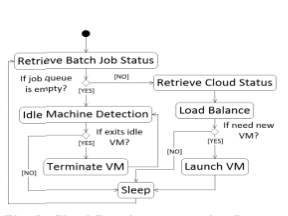
Figure 2: Cloud bursting automation
(Source: Buyya et al. 2010)
Idle machine detector
Generally the idle machine detector used to identify or detect the virtual machine which is associated with the one kind of batch system. It is very critical task to detect the idle virtual machine which is present in the cloud bursting process. It is not possible for the system to burst out all the resources in every time. Generally any kind of idle virtual machine in the resource pool then with the help of bursting method those resources are reduced then it is possible to reduce the energy consumption (microsoft.com (2012).
Implementation or development
In order to reduce the energy consumption load balancing algorithm is implemented in the particular cloud computing system. Load balancing algorithm is used to manage the service request. With the help of this kind of algorithm it can be suggest that whether the service request is need present or remain same in the queue or it will get services from other service provider. Apart from that with the help of load balancing it is possible to reassess the loads in a specific node. With the help of this kind of load balancing algorithm basically the workload is balanced between two cloud services (refer to appendices 1)
Load Balancing Algorithm involving a Round-Robin Scheduling Process
The concept of round robin is implemented in this load balancing process in this project work. In this method, time quantum is implemented. In the following way, this algorithm is proceeded:
Round_Robin_Load_Balancing_Algorithm ()
{
The status of all virtual machines available is firstly made to be present in the state list of virtual machine. Following this, the hash map is started without incorporating any values. The while loop is then performed as provided below:
While (condition of the while loop is: the new request is received by the Data Center Controller)
do
{
The Data Center Controller queues the requests;
From the beginning of the queue, the request is erased by the Data Center Controller; following this, the performance of decision-making takes place:
if (do any of the entry is contained in the hash map, the virtual machine entry which associates with the user base that is being presently requested AND (&&) the virtual machine status is compared ( whether it is feasible or not) i.e status of allocation of a VM == Available)
{
To that call of the particular user, VM is allocated
}
else
{
Utilizing the Round Robin procedure, the user base request receives the virtual machine;
Entry of the user is then updated and the updating of the virtual machine entry also takes place in the hash amp as well as listing of VM state;
}
}
}
Round robin algorithm is one of the most basic techniques that implement the time slice principles. The time is sliced into multiple numbers in this case and every node is allocated a specific slice of time or interval of time, i.e. the principle of time scheduling is utilized. A quantum and its operation are given to each node. On the basis of slice of time, the resources of service provider are offered to the requesting client.
Setup of an experiment to implement this algorithm
With the support of packaged simulators like clouds based tool and Cloudsim, round robin algorithm is put into use. In order to implement the algorithm of VM load balancing, Java language is utilized.
In one data center that possesses 5 virtual machines, it is assumed that cloudsim toolkit has been implemented in one center of data (with 1024 Mb memory of each individual VM utilizing physical host with 1000 MIPS) where the values of the parameter are described as follows:
| Parameter | Values |
| Image size of VM | 10000 |
| Memory of VM | 512 MB |
| Bandwidth of VM | 1000 |
| Architecture of Data Center | X86 |
| Operating System invoked in Data Center | Linux |
| Virtual Machine Manager of Data Center | Xen |
| Number of machines built in Data Center | 5 |
| Memory of each machine in Data Center | 2 GB |
| Storage of each machine in Data Center | 10K MB |
| Bandwidth available per machine in Data Center | 1000 |
| Number of processors in each machine of Data Center | 5 |
| Virtual Machine Policy of Data Center | Time shared |
| Policy of Service Broker | Optimizing time of response |
Table 1: Values of Parameter
(Source: Learner)
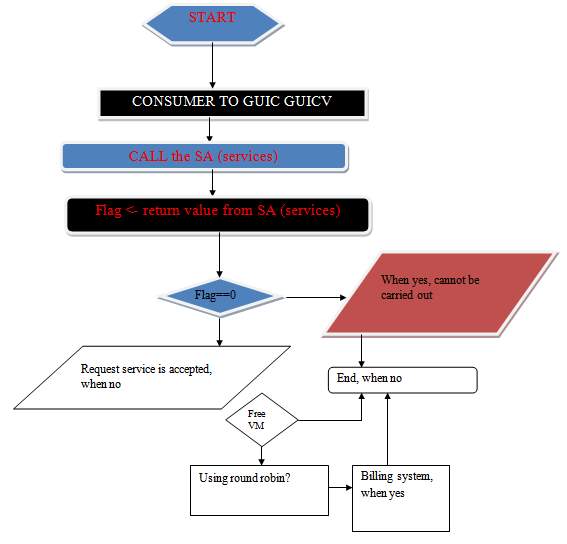
Fig.3: Flowchart of Round-Robin Load Balancing Algorithm
(Source: Learner)
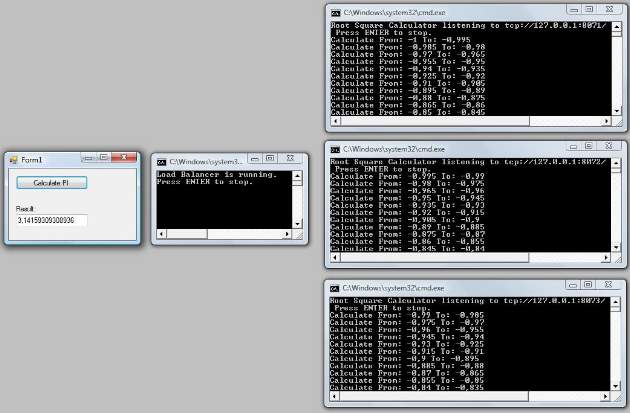
Fig.4: When the code is being executed
(Source: Learner)
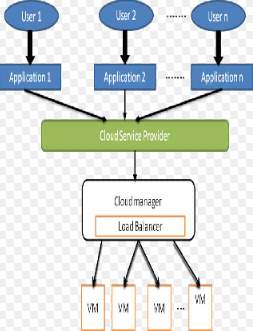
Fig.5: Implementation of Round robin Load Balancing Algorithm
(Source: Rahman et al. 2013).
Evaluation of result
According to the Round Robin Load Balancer Algorithm that has been utilised for simulation, the language of Java is utilised for invoking VM algorithm of load balancing. The results were based on this algorithm with respect to overall time of response in the cloud. A various number of virtual machines are evaluated in this max (ms) time and min (ms) time. The results dependent on this algorithm for Data Centre time processing of cloud. In this, max (ms) time and min (ms) time to various virtual machines are evaluated as follows:
| VM Numbers | Average (ms) | Max (ms) | Min (ms) |
| 5 | 300.06 | 369.12 | 237.06 |
| 10 | 300.4 | 369.12 | 237.06 |
| 15 | 300.5 | 369.12 | 237.06 |
| 20 | 300.7 | 370.02 | 237.4 |
| 25 | 300.9 | 370.02 | 237.4 |
Table 2: Load Balancing via Round Robin method for time of overall response
(Source: Learner)
| VM numbers | Average (ms) | Maximum (ms) | Minimum (ms) |
| 5 | 0.34 | 0.61 | 0.02 |
| 10 | 0.51 | 1.51 | 0.02 |
| 15 | 0.85 | 1.51 | 0.02 |
| 20 | 1.04 | 1.51 | 0.06 |
| 25 | 1.21 | 1.51 | 0.11 |
Table 3: Processing time for Data Centers in Round Robin Load Balancing
(Source: Learner)
Evaluation of results demonstrates that time taken for overall response and time taken for processing by data centers in Round Robin Load Balancing takes less time than Round Robin procedure. When there is an increase in virtual machines, then the overall time of response and processing time by data centers increases. The problem of server overflow and deadlock are decreased in environment formed by clouds, as per the new server broker policy that is implemented in virtual machines, in this case algorithm of Round Robin Load Balancing.
Distributed load balancing
According to Chen et al. (2013), distribution load balancing is different from centralized load balancing algorithm and in this kind of algorithm no individual or single node are not responsible for making any kind of decision and for allocating job in virtual memory. In this kind of distributed load balancing algorithm any individual or single domain will not monitor or observe the cloud network. Beside that multiple monitor or domain monitor will actually make proper and effective load balancing decision. All the nodes in the distributed load balancing actually uses local knowledge to secure and ensure most effective and proper distribution of tasks in a specific and particular static environment and at the same time it distribute the tasks also to the dynamic environment. In that particular load balancing possibility of any kind of fault is not neglected but at the same time this system is fault tolerance. Apart from that there is less possibilities of overload which happen in case of centralized load balancing
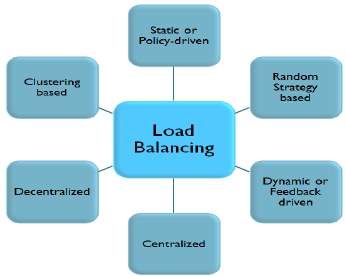
Figure 7: types of load balancing algorithm
(Source: Chen et al., 2013)
Hierarchical load balancing
This kind of load balancing technique is totally different from centralized and distributed load balancing technique and this kind of load balancing algorithm actually used in cases of master slave mode. This kind of load balancing structure or algorithm basically use tree structure model and with the help of this kind this kind of data structure all the nodes are being supervised in the particular load balancing algorithm.
Implementation of load balancing algorithm suggests or explains some more factors.
Generally this kind of algorithm is basically used in virtual machine and or various kind of virtual server and with of this load balancing algorithm server normally serves and also process the particular resources to the user. Some more than one and various kind of request is generated in the queue. In that particular cases load balancer is actually identify or specify the load from each server (Doddavula et al. 2013). If the resources of the particular server are free only then a specific request are allocated in a server. The main goal or aim of the load balancing is to control the load balance of a particular server otherwise it will perform the job without considering the entire request.
Challenges of implementation in case of reducing the energy consumption of cloud bursting
Resource allocation strategy
Basically decides all the physical devices and in that place the actual virtual machine is allocated. This is mainly used in case of horizontal deployment and this kind of horizontal deployment basically consumes more energy because it tries to develop or create the virtual machine on the same physical machine.
Virtual machine launching overhead
Virtual machine overhead can create huge amount of problem in case launching the virtual machine for particular batch jobs. This kind of overhead can make serious problem because if a new virtual machine is launched for a particular job which is existing in the queue and at that time if that running job is completed when that new virtual machine is launching then it can create the actual problem (Suleiman et al. 2012). When the new virtual machine is ready to perform the new job and if that new virtual machine is actually provide that job then there is no job present in the queue and then idle condition is created. Therefore it creates major problem. Therefore it can be considered one of the main challenges in case of implementing the cloud balancing.
Prediction of job completion time
Prediction of time for completing any particular is also accounted as one of the major challenges for this cloud bursting process. This is because of the fact that the activities done in cloud either in private or public, it is quite hard to predict the estimated time for those. Along with that, the issue regarding the overestimation of time is also a major concern regarding the cost of project. On the other hand, underestimation can harm the entire work for completion. Therefore, this particular aspect needs to be accounted in the time of designing as well as developing the system.
Evaluation
The consideration of the judgment about reducing the energy consumption about the horizontal deployment process is discussed here. Researchers analyze the process considering the cloud bursting and find some procedures for implementing the design part.
The virtual cluster is one of them for the further implementation. Virtual cluster provides various types of resources different types of component for batch system, monitoring and managing. The information of the workload is recovered in the virtual cluster. Virtual clusters are logically connected into the network. The experts research and create assessment for the purpose of it and make the justification for providing multiple functionalities of the server and the flexibility of the applications for making the process understandable by the users (Sedaghat, Hernandez-Rodriguez, and Elmroth, 2013). In case of cloud bursting or to reduce energy consumption most important thing is synchronized load balancing.
This type of load balancing are done or mainly conducted according to the machines ID. Basically when the particular task is ready to perform only then it uses the specific virtual machine according to the particular allocated ID. At first retrieval of data and the entire authentication steps of specific virtual machine are performed in the cloud services to execute the job properly. Apart from that with the help of this kind of balancing energy consumption can be reduced and at the same time more time can be saved (Antonopoulos and Gillam, 2010). The main goal or aim of the load balancing is to control the load balance of a particular server otherwise it will perform the job without considering the entire request.
Synchronized load balancing algorithm or in other word data synchronization is actually web based application and basically this kind of load balancing is used to transfer the data from one cloud to another cloud. In most of the cases it does not even need any kind any kind of download in the end user’s side. Specifically this kind of algorithm breaks the particular tasks into independent individual jobs and these jobs are specially allocated in a virtual server and with the help of these tasks are performed faster (Mandal et al.2013). As a result it reduces the energy consumption and balance the load. Beside that with the help of this kind of synchronized load balancing algorithm it basically go through with divisible load balancing theorem and in most of the cases it maximize and minimize the performance of various kind of parameters and that are latency and throughput to balance the load on a particular virtual server.
Energy consumption in cloud computing or data center is one of the major problems for each and every computing industry. The server particularly hosted the in data center which scatter more heat and therefore it basically requires load balancing and specially synchronized load balancing algorithm. The utilization of the resources is maximum in case of synchronized load balancing algorithm and with the help of this kind of algorithm all the virtual are properly synchronized. As a result with this kind of structure all the jobs and tasks can perform more better way. In case when multiple numbers of jobs are basically waiting in a particular queue then all the virtual machine status allocation one after another. It is going on until all the jobs get properly completed (Ficco and Palmieri, 2015).
Energy consumption in case of cloud bursting during horizontal deployment can also be executed with the help of scheduling algorithm. With the help of this kind of scheduling algorithm helps to decrease the energy cost also. Apart from that this type of scheduling algorithm basically increases the complexity for the specific and particular scheduling problem because this kind of application is not based on some particular make span constrain. In order to access unlimited resources in the cloud computing and the meaning of this kind of technique is that server instances are deployed simultaneously.
With the help of scheduling algorithm hybrid cloud model basically uses cloud bursting and private cloud server rely on public cloud provider or over the resources of public cloud application. In this approach heuristic algorithm plays the major role and main function of scheduling algorithm is to use maximum resources and at the same time minimize the time consumption. In scheduling algorithm the main parameters are all the data that are stored and the exact time period and the specific virtual machine ID that are used. Apart from that this kind of algorithm is one kind of priority based algorithm which basically deals with all the attributes of the cloud (Baker et al. 2017).
Multiple queue scheduling algorithms are generally used or suggest that all the multiple queue processor actually made priority to priory for any particular job or function. In this process high priority task get more convenient option and at the same time low priority get delayed and at the end of the task.
Conclusion and discussion
It can be deduced from the above report topic that energy consumption is one of major issue in case of current scenario because it can be seen that huge energy consumption is happening in cloud bursting during horizontal deployment. From the above discussion it can be stated that when private cloud is transmitted or moved in the public cloud them huge amount of energy consumption is happened. In order to reduce energy consumption in cloud bursting technique there are various technique are used and one of the major technique in between them is load balancing algorithm. Apart from that scheduling process algorithm is also plays major role to reduced energy consumption and at the same to save more times.
After that from the discussion it can be deduced that virtual machine takes most important when the actual cloud bursting takes place. In literature review the discussion focuses on resource allocation and scheduling algorithm and also in the synchronized load balancing. In resource allocation technique basically the discussion get conducted about cloud bursting and at the same time about resource allocation for single and multiple jobs which are arriving in the virtual machine. In scheduling algorithm the discussion focuses in which way heuristic scheduling algorithm takes place and perform their job. The main function of this kind of scheduling algorithm is to utilize maximum amount of resources in minimum time.
After that it can be deduced from the above discussion that load balancing or synchronized load balancing plays their role in which manner and according to the discussion it maximize the utility or utilization of the resources in virtual machine. After that in methodology part the discussion actually focuses on the various approaches of load balancing algorithm and that is retrieval of data from virtual machine, creation of virtual machine and at the same time migration of particular virtual machine is conducted. After that in this mentioned topics the discussion actually focus on designing part and in designing part main four component of cloud bursting are discussed. In this part the discussion also focuses in which way to actual performance of those parts are conducted.
In this section the main part that are discussed that are virtual clustering method, load balancing algorithm and also the cloud bursting algorithm. After that the discussion focuses on the implementation of that algorithm that is performed in this discussion. Especially in this section the discussion focus on various part of load balancing algorithm and the performance pattern of those part of load balancing algorithm. In this part the discussion also focused on challenges of load balancing algorithms. After that the discussion focused on evaluation part and from that particular evaluation the analyses and all the specific findings are constructed.
Reference List
Books
Antonopoulos, N. and Gillam, L., 2010. Cloud computing. London: Springer
Buyya, R., Broberg, J. and Goscinski, A.M. eds., 2010. Cloud computing: Principles and paradigms (Vol. 87). John Wiley & Sons.
Journals
Altamimi, M., Abdrabou, A., Naik, K. and Nayak, A., 2015. Energy cost models of smartphones for task offloading to the cloud. IEEE Transactions on Emerging Topics in Computing, 3(3), pp.384-398.
Baker, T., Asim, M., Tawfik, H., Aldawsari, B. and Buyya, R., 2017. An energy-aware service composition algorithm for multiple cloud-based IoT applications. Journal of Network and Computer Applications, 89, pp.96-108.
Chen, G., He, W., Liu, J., Nath, S., Rigas, L., Xiao, L. and Zhao, F., 2013, April. Energy-Aware Server Provisioning and Load Dispatching for Connection-Intensive Internet Services. In NSDI (Vol. 8, pp. 337-350).
Cui, Y., Ma, X., Wang, H., Stojmenovic, I. and Liu, J., 2013. A survey of energy efficient wireless transmission and modeling in mobile cloud computing. Mobile Networks and Applications, 18(1), pp.148-155.
Djemame, K., Bosch, R., Kavanagh, R., Alvarez, P., Guitart, J. and Blasi, L., 2017. PaaS-IaaS Inter-Layer Adaptation in an Energy-Aware Cloud Environment. IEEE Transactions on Sustainable Computing.
Doddavula, S.K., Agrawal, I. and Saxena, V., 2013. Cloud computing solution patterns: Infrastructural solutions. In Cloud Computing (pp. 197-219). Springer London.
Ficco, M. and Palmieri, F., 2015. Introducing fraudulent energy consumption in cloud infrastructures: a new generation of denial-of-service attacks. IEEE Systems Journal.
Galante, G. and de Bona, L.C.E., 2012, November. A survey on cloud computing elasticity. In Utility and Cloud Computing (UCC), 2012 IEEE Fifth International Conference on (pp. 263-270). IEEE.
Mandal, U., Habib, M., Zhang, S., Mukherjee, B. and Tornatore, M., 2013. Greening the cloud using renewable-energy-aware service migration. IEEE network, 27(6), pp.36-43.
Moreno-Vozmediano, R., Huedo, E., Llorente, I.M., Montero, R.S., Massonet, P., Villari, M., Merlino, G., Celesti, A., Levin, A., Schour, L. and Vázquez, C., 2015, September. BEACON: A cloud network federation framework. In European Conference on Service-Oriented and Cloud Computing (pp. 325-337). Springer, Cham.
Ouardi, A., Sekkaki, A. and Mammass, D., 2017. TOWARDS ENERGY EFFICIENCY IN AN INTEGRATED HEALTH CARE INFRASTRUCTURE BASED ON THE CLOUD. Journal of Theoretical and Applied Information Technology, 95(5), p.1200.
Ouardi, A., Sekkaki, A. and Mammass, D., 2017. TOWARDS ENERGY EFFICIENCY IN AN INTEGRATED HEALTH CARE INFRASTRUCTURE BASED ON THE CLOUD. Journal of Theoretical and Applied Information Technology, 95(5), p.1200
Rahman, M., Gao, J. and Tsai, W.T., 2013, March. Energy saving in mobile cloud computing. In Cloud Engineering (IC2E), 2013 IEEE International Conference on (pp. 285-291). IEEE.
Sedaghat, M., Hernandez-Rodriguez, F. and Elmroth, E., 2013, August. A virtual machine re-packing approach to the horizontal vs. vertical elasticity trade-off for cloud autoscaling. In Proceedings of the 2013 ACM Cloud and Autonomic Computing Conference (p. 6). ACM.Moreno-Vozmediano, R., Montero, R.S. and Llorente, I.M., 2012. Iaas cloud architecture: From virtualized datacenters to federated cloud infrastructures. Computer, 45(12), pp.65-72.
Suleiman, B., Sakr, S., Jeffery, R. and Liu, A., 2012. On understanding the economics and elasticity challenges of deploying business applications on public cloud infrastructure. Journal of Internet Services and Applications, 3(2), pp.173-193.
Sun, Y., Li, X., Mao, Y. and Fang, W., 2017. PROXZONE: One Cloud Computing System for Support PaaS in Energy Power Applications. Intelligent Automation & Soft Computing, pp.1-11.
Toosi, A.N., Calheiros, R.N. and Buyya, R., 2014. Interconnected cloud computing environments: Challenges, taxonomy, and survey. ACM Computing Surveys (CSUR), 47(1), p.7.
Website
microsoft.com (2012) Designing Your Cloud Infrastructure [Accessed from technet.microsoft.com/en-us/library/hh831630(v=ws.11).aspx on 20th july 2017]
Appendices
Appendices 1
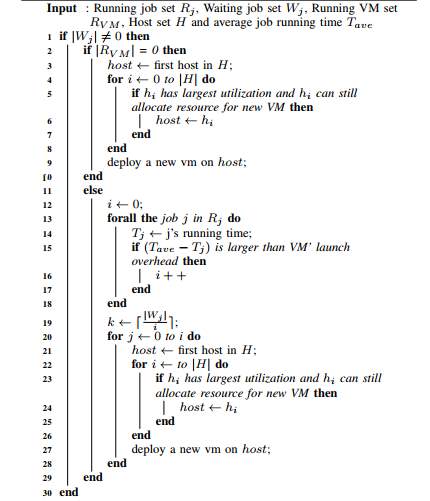
Figure 4: Load balancing algorithm
(Source: Ficco and Palmieri, 2015)
Cite This Work
To export a reference to this article please select a referencing stye below:
Related Services
View allRelated Content
All TagsContent relating to: "Computing"
Computing is a term that describes the use of computers to process information. Key aspects of Computing are hardware, software, and processing through algorithms.
Related Articles
DMCA / Removal Request
If you are the original writer of this dissertation and no longer wish to have your work published on the UKDiss.com website then please:




